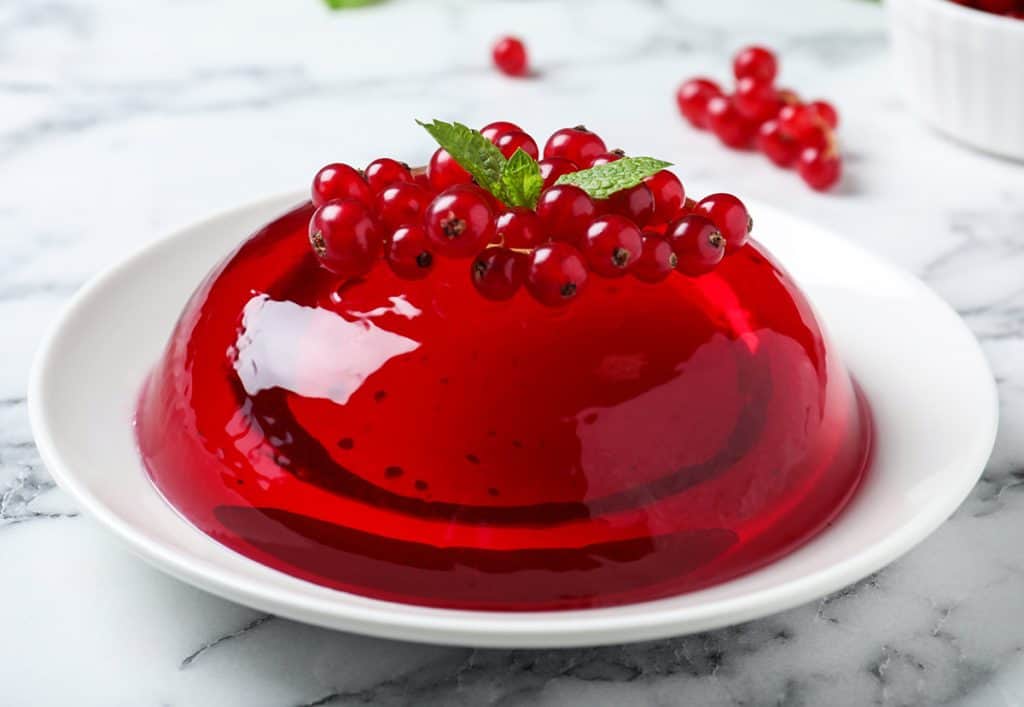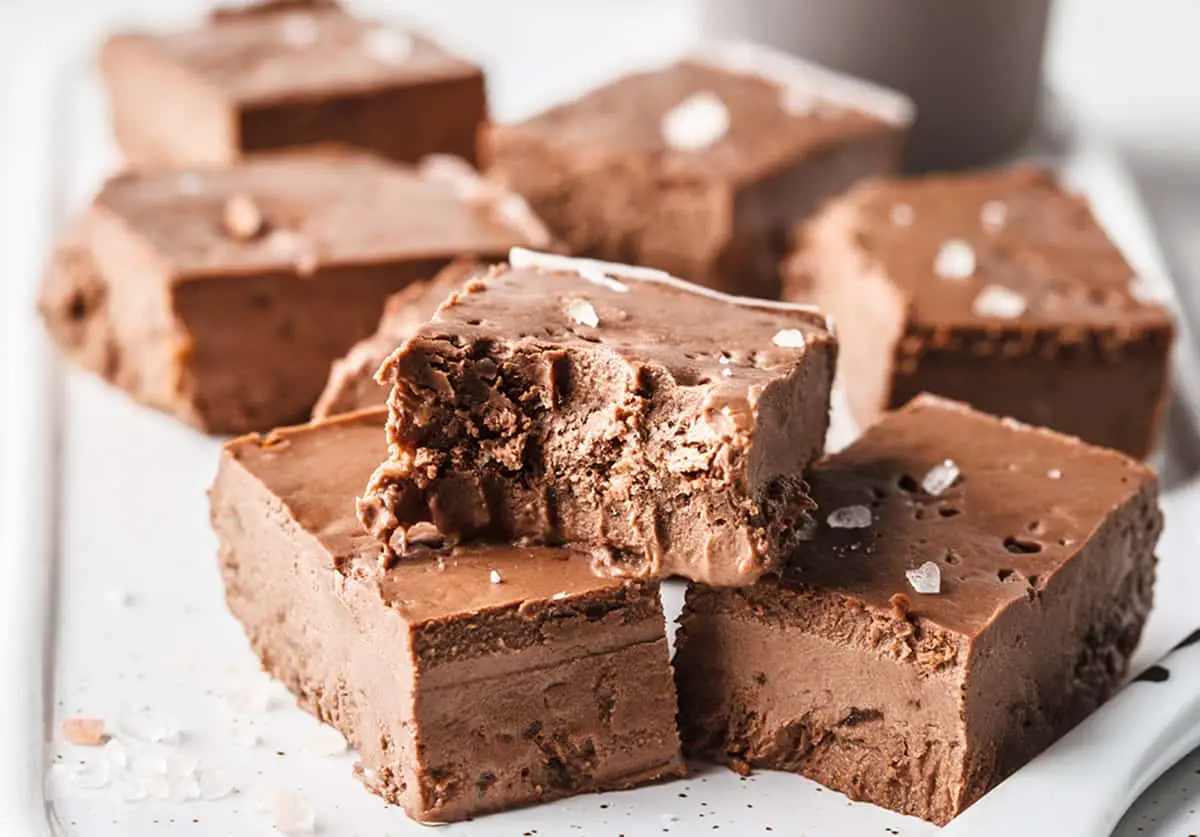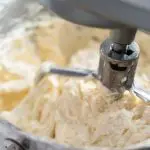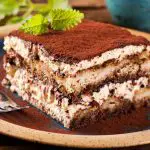Freezing Jello: The Ultimate Guide
If you’re making a jello-based food or drink and there’s not enough time for it to solidify in the fridge, using your freezer might seem like a time-efficient alternative at first. However, your fridge and freezer aren’t as interchangeable as you might’ve thought for solidifying jello. So, can you freeze jello?
You can freeze jello, although it’s not advisable. Even though the substance will solidify after being left in the freezer, the texture won’t be as smooth or gelatinous as you would expect. Furthermore, thawed jello is highly likely to separate and become clumpy.
In the following sections, I’ll take you through everything you need to know about freezing jello and the correct ways to go about speeding up the setting process. Keep reading.

Should You Freeze Jello?
Generally speaking, you shouldn’t freeze jello. The substance’s ingredients don’t work well in below-freezing temperatures, causing it to change its texture and separate. Thawed jello is clumpy, watery, and unsuitable for consumption.
The structure that gives jello its signature wiggle doesn’t allow the substance ever to become solid (more on that later). That means all the freezing process will do is damage the jello’s structural bonds without achieving much else in the meantime.
The texture and taste will deteriorate even further after the dessert is thawed; therefore, it’s important to avoid leaving your jello in the freezer for extended periods, especially if you’re planning to share your dish with guests.

The only exception to this rule is if you’re planning on making a frozen dish that combines jello with other ingredients. Some of the most common examples would be jello popsicles and jello ice cream.
However, for any other jello-based dish, it’s probably best you leave it in the fridge, as freezing temperatures will severely damage its structure and texture.
If you’re in a pinch and have a jello dish that needs to be set as soon as possible, you can try to leave it for 5–10 minutes in the freezer to speed up the process or alternate between the fridge and the freezer. However, I wouldn’t recommend taking this risk—I’ll delve into a much more efficient way of making jello set faster later in the article.
In short, only freeze jello if you’re planning on eating a frozen dessert because if thawed, the substance will quickly deteriorate in texture and taste.
How Do I Make Jello Set Faster?
There are better ways to make jello set faster than using a freezer, especially if you’re in a hurry. You can still accelerate the solidifying process without changing the substance’s texture or flavor. This method is especially helpful if you’re planning on making a layered jello dessert.
You can make jello set faster by using the ice bath technique. This technique requires a sizable container and ice, providing the low temperatures necessary to make the substance solidify faster without freezing it.
As you can see, this process is as straightforward as it can be. To achieve it, all you have to do is fill your container (which should be big enough to keep the jello dish inside) with equal parts ice and water. The specific measurements will depend on the amount of jello you want to set.
After you’ve filled your container to the desired level, you can place the jello dish inside. Be careful during this step, as you’ll want to avoid any spillage. Then, you’ll need to carefully stir the dish with the ice and water around for up to half an hour, always making sure not to let any icy water splash inside your jello mold.
With this step, your work is done. All that’s left to do now is to put the jello dish in the fridge like you usually would. The substance should be completely solidified within an hour or two, as when the ice bath technique is done correctly, it can shave off up to two hours from the setting time.
Can You Freeze Jello Shots?
Say you’re about to host a party, and your jello shots aren’t set yet. I’ve already covered that jello in itself isn’t the ideal substance to freeze, but how does the reaction change when you add alcohol into the equation?
You can’t freeze jello shots. Alcohol and jello are substances with different freezing points, causing them to separate when put in such low temperatures. The result will be a half-liquid, half-solid beverage that won’t be texturally enjoyable for anyone.
Jello shots don’t have any temperature stabilizers, as they’re typically made out of alcohol, some type of sugary beverage, and gelatine. Furthermore, they aren’t made to be consumed frozen, meaning thawing them beforehand is a must.

Alcohol has a very low freezing temperature that can’t be achieved in most commercial freezers, meaning no matter how long you leave your shots inside, the alcohol in them will remain in a liquid state.
However, the only liquid in jello is water, with a freezing temperature of 0°C (32°F), which can be easily achievable by any home freezer. As you can imagine, these differences will lead to the shots separating and turning into a squishy, lumpy, watery beverage that won’t be enjoyable either taste or texture-wise.
There’s no benefit to freezing jello shots, as doing so would likely end up costing you more time and ingredients in the long run. If your shot containers have individual caps, you could try using the ice bath technique here as well; but you would need to be extremely careful to avoid any spillage.
For this reason, I suggest being patient and using your fridge to let the jello shots set, as recommended. Maybe you won’t be able to serve them as soon as you’d like, but at least you won’t have to throw them away altogether.
Given that this type of beverage is usually served in small, individual-sized cups, they’re likely to solidify much faster than a typical container of jello dessert would. Therefore, by waiting an extra half hour, you’ll be able to enjoy and serve the perfect jello shots.
What Happens When You Thaw Jello?
When you thaw jello, two compounds found in the gelatin that give jello its structural integrity, colloids, and polymer, get destroyed after being exposed to below-freezing temperatures. For this reason, the texture of your dish will suffer, losing its integrity and gaining a more watery quality.
These compounds are essential in creating bonds between gelatin molecules, but they don’t react well to freezing. Therefore, they break down and disintegrate when exposed to these temperature levels.
However, because the water found in jello is frozen in these temperatures, the dish is solidified and temporarily retains a solid structure. However, when the jello is thawed, and the water returns to its liquid state, the substance loses its structural integrity, turning into mush.

Furthermore, it’s impossible to turn the substance into its original shape after these bonds are destroyed, meaning the dish will need to be thrown away.
But the texture isn’t the only element that deteriorates during the thawing process. Even though most natural and artificial flavorings don’t get lost when you freeze your jello, the water leaking through the bonds will dilute and deteriorate the flavor after thawing it.
Not to mention that texture plays a crucial role in one’s enjoyment of food in the first place. You can be given to identical-tasting dishes, and if one’s texture doesn’t seem appealing, you’ll perceive it as worse tasting as well.
For these reasons, even if some jello dishes can be frozen and consumed immediately, I strongly recommend never attempting to thaw them, as they more than likely won’t be edible afterward.
Conclusion
Although you may be looking for an easy method to make your jello dish solidify more quickly, freezing it is rarely the way to go. While a handful of frozen desserts might turn out well prepared this way, most jello dishes don’t react well when put in below-freezing temperatures.
They tend to separate and get a slushy, watery texture with chunks that are not enjoyable. After the thawing process, the taste often suffers as well. Opting for an ice bath might be a bit slower, but it still saves you a lot of time and delivers excellent results.






